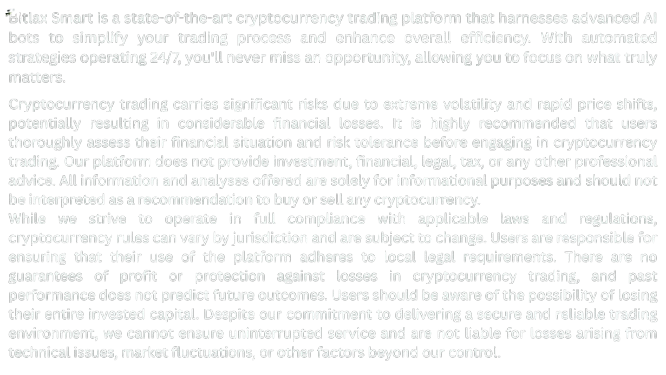Introduction
So, your bot is trading. Great! But do you really know what it’s doing and why it’s doing it?
Reading your crypto bot’s trade log is essential to understanding performance, detecting issues, and fine-tuning strategies. But most logs are packed with numbers, timestamps, and jargon—easy to overlook, harder to interpret.
This article shows you how to confidently read and analyse a crypto bot’s trade log using Bitlax Smart or any advanced crypto bot platform.
🧾 What Is a Trade Log?
A trade log is a detailed record of every action your bot takes:
- Buy/sell orders
- Entry/exit points
- Reasons for trades
- Indicators triggered
- Profit/loss from each position
Think of it as your bot’s diary. It tells the story behind every trade.
🔍 Why Reading the Trade Log Matters
| Purpose | Benefit |
|---|---|
| Transparency | Know what your bot is doing and when |
| Troubleshooting | Identify bugs or logic errors |
| Optimisation | See which rules work and which don’t |
| Trust-building | Gain confidence in automation |
🔢 Key Fields in a Trade Log (Explained Simply)
| Field | Meaning |
|---|---|
| Timestamp | When the trade happened (in UTC or local) |
| Action | BUY / SELL / STOP LOSS / TAKE PROFIT |
| Pair | The trading pair used (e.g. BTC/USDT) |
| Trigger | Which signal or condition activated the trade |
| Order Type | Market or limit |
| Entry Price | Price at which the bot entered |
| Exit Price | Final sell price or stop-out |
| PnL | Profit or loss for that trade |
| Reason | Why the trade was executed (e.g., RSI<30, MA crossover) |
📊 Sample Trade Log Entry (With Commentary)
jsonCopyEdit{
"timestamp": "2025-06-17 14:32:01",
"action": "BUY",
"pair": "ETH/USDT",
"trigger": "RSI < 28 & MA(20) cross",
"order_type": "Market",
"entry_price": "3067.45",
"exit_price": "3102.80",
"PnL": "+1.15%",
"reason": "Oversold bounce with trend confirmation"
}
👀 This trade was triggered by an RSI signal and a moving average cross—two confirming factors. Good logic!
🧠 How to Analyse Trade Log Data Like a Pro
1. Look for Patterns
Do most losing trades happen at the same time of day or under the same conditions? That’s a red flag to adjust logic.
2. Check Trigger Validity
Is your bot trading on weak signals? If the “reason” field repeats the same low-confidence indicator, tweak your logic.
3. Evaluate Entry and Exit Timing
Look at the delay between signal and execution. If slippage is high, maybe switch to limit orders.
4. Compare PnL to Trade Duration
Short trades with big losses may mean bad scalping logic. Long trades with small wins? Maybe your bot’s too cautious.
📈 Turn Logs Into Insights: What to Track
| Metric to Derive | What It Tells You |
|---|---|
| Average Win / Loss | Profitability per trade |
| Win Rate % | How often your bot wins |
| Max Drawdown | Risk level of the strategy |
| Trade Frequency | Is the bot too passive or too active? |
| Average Holding Time | Strategy aggressiveness |
🧰 Tools to Help Visualise Logs
- Bitlax Smart Log Dashboard (built-in charting)
- Export to Excel / Google Sheets
- Use log parsers or third-party analytics (e.g. TradingView Webhooks)
❌ Red Flags in a Trade Log
- 💥 Too many stop losses triggered in a row
- 🔁 Same trade repeated over and over again
- 🕰️ Trades during unusual hours (e.g. 3am with low volume)
- 🚫 High slippage or failed order executions
- 🤷♂️ “Reason” field says “N/A” or “manual override” (unexpected!)
✅ What a Healthy Trade Log Looks Like
- Diverse reasons for trades
- Logical spacing between orders
- Balance between wins/losses
- Controlled exposure and position sizes
- Human-readable commentary or signals
Final Advice
Don’t ignore your trade log. It’s the most honest source of truth about how your bot is doing. If something feels “off” in performance, the answer is probably in the log.
“Your bot might be automated. But your attention shouldn’t be.”
Next Steps:
- Open your Bitlax Smart dashboard
- Go to Trade Logs > Filter by Bot
- Review the last 20 trades
- Look for inconsistencies, then adjust accordingly


